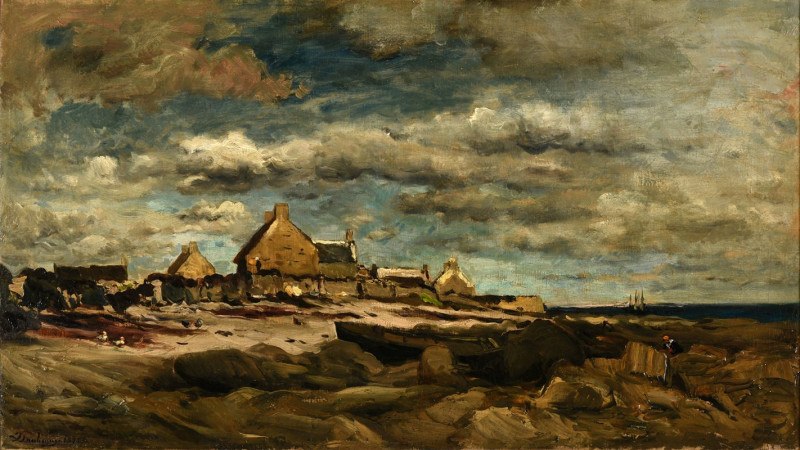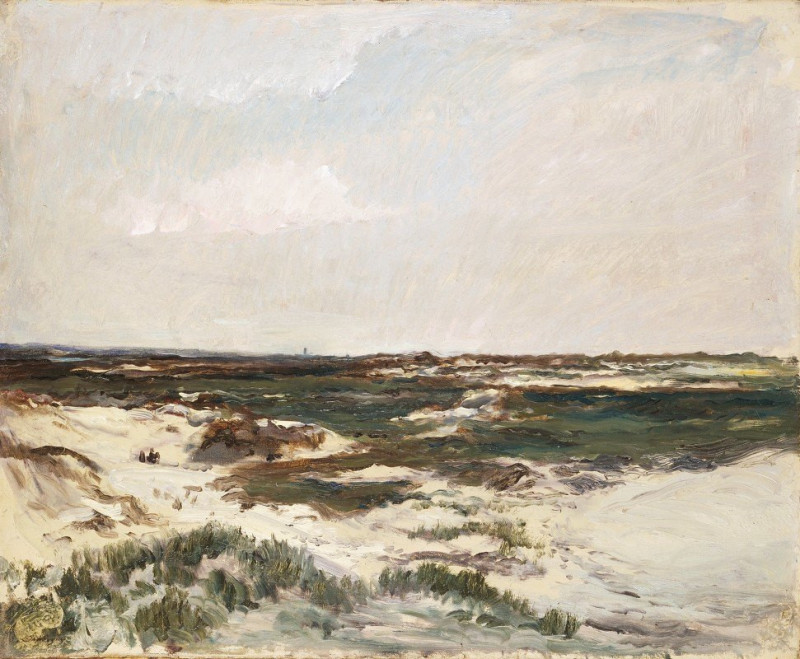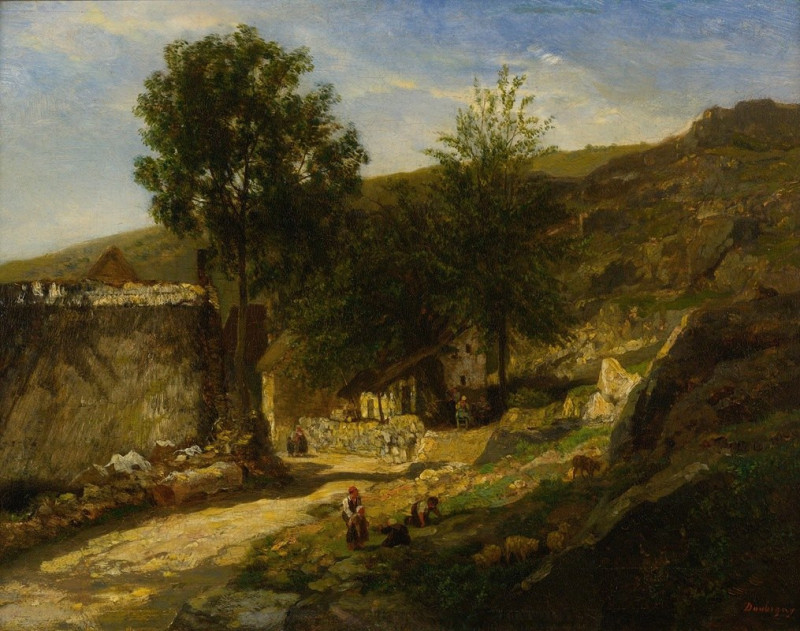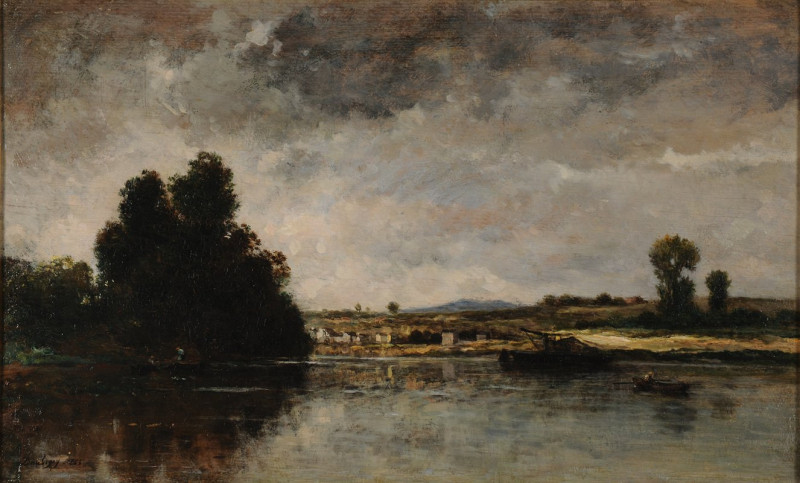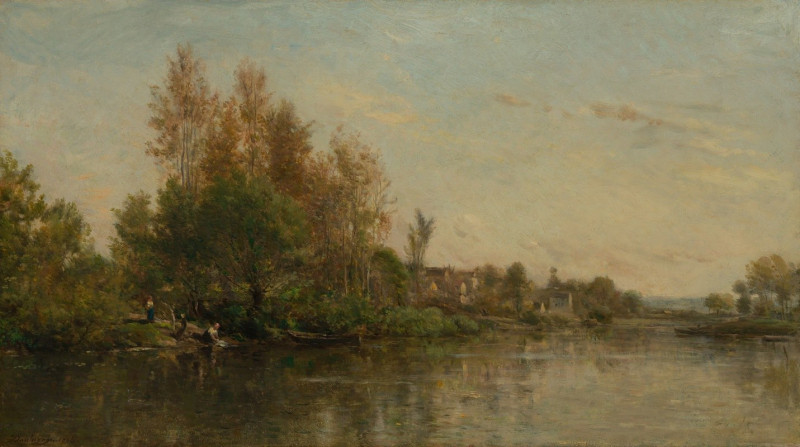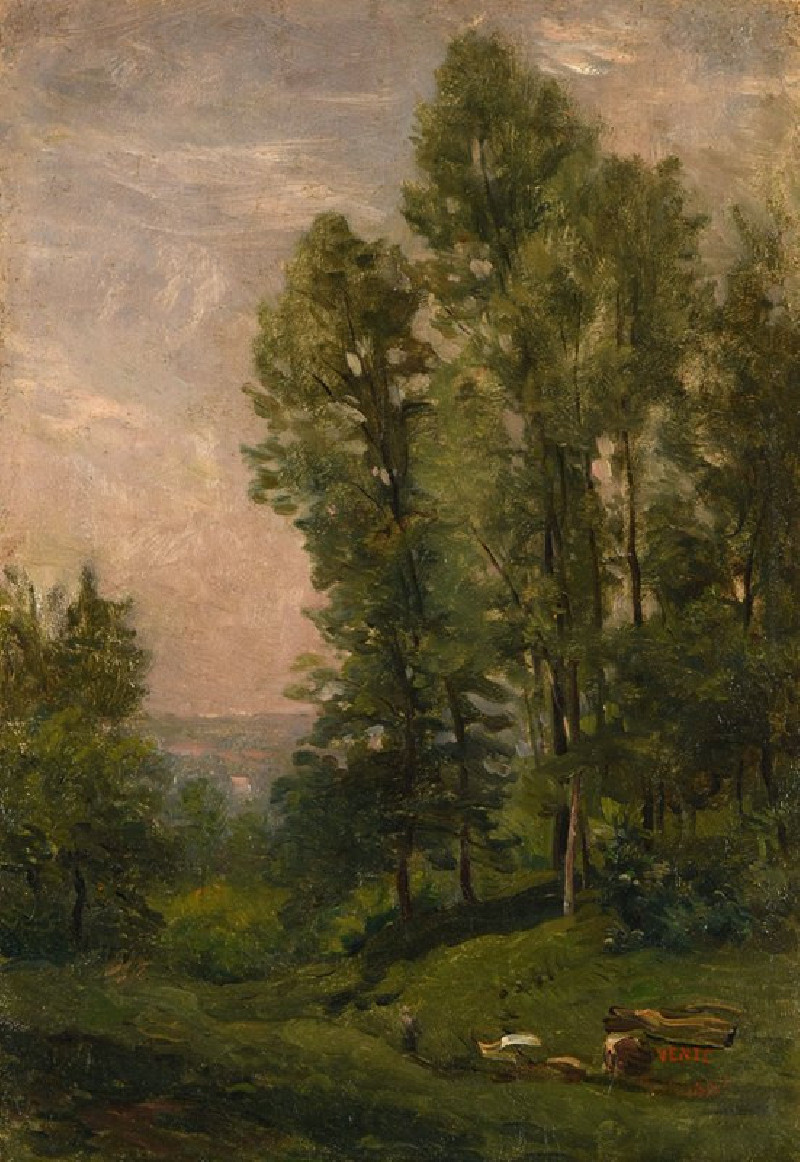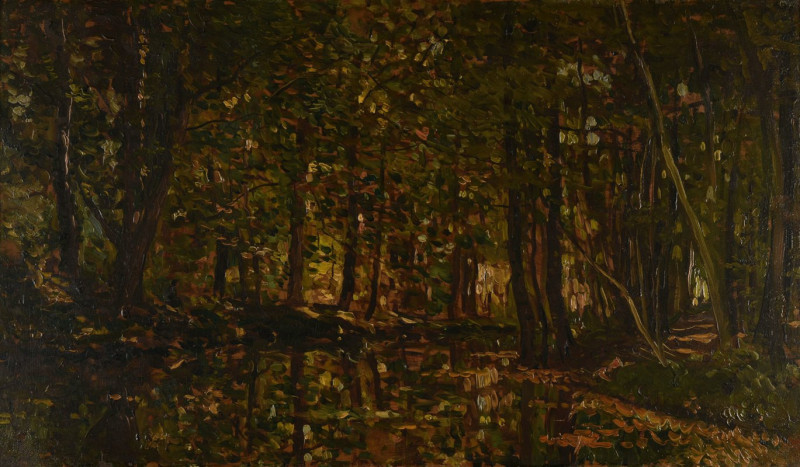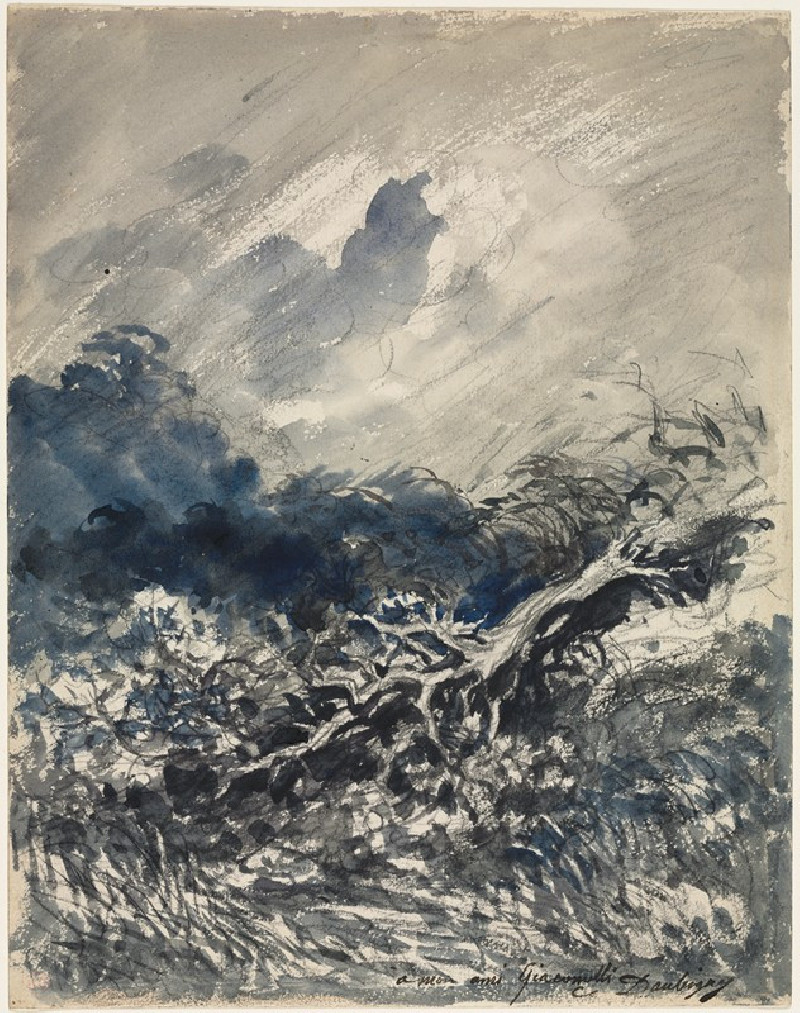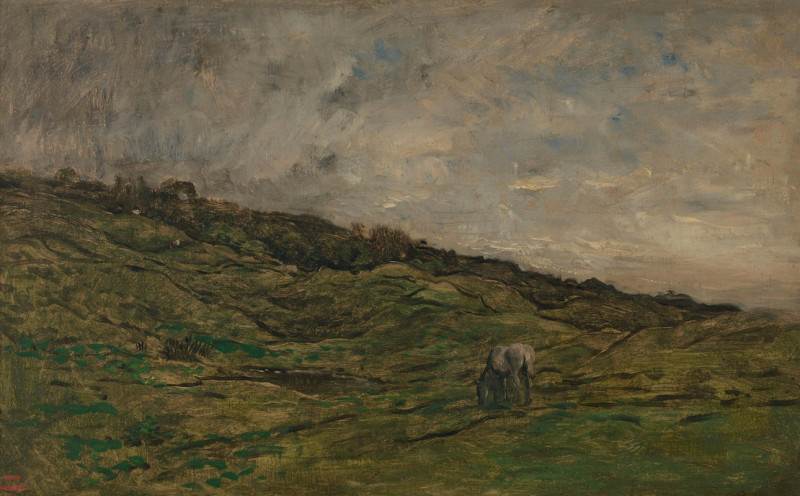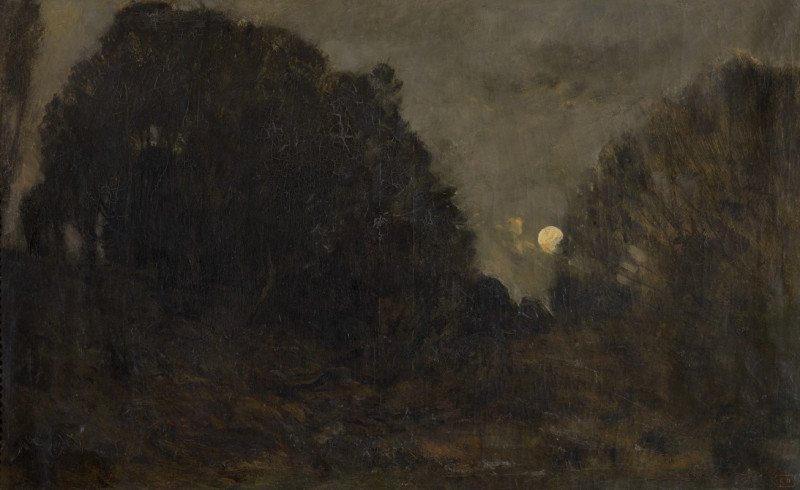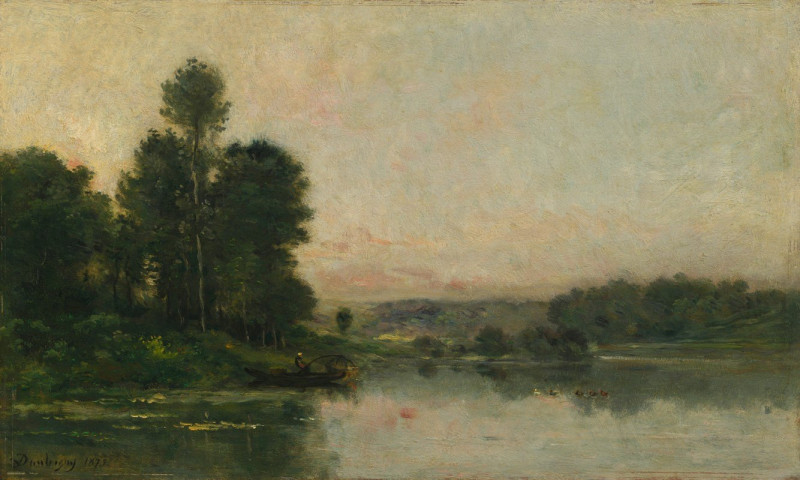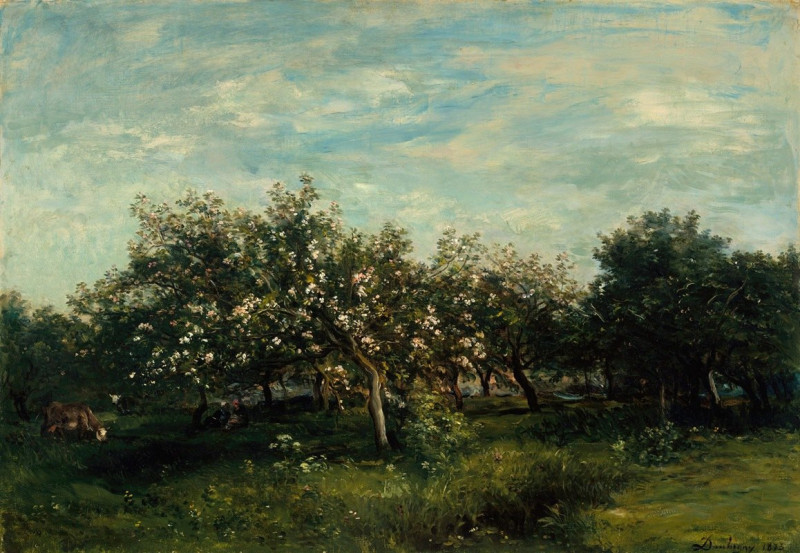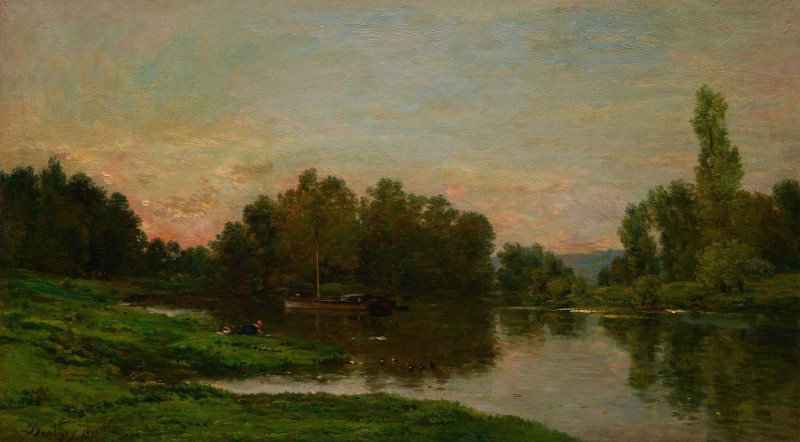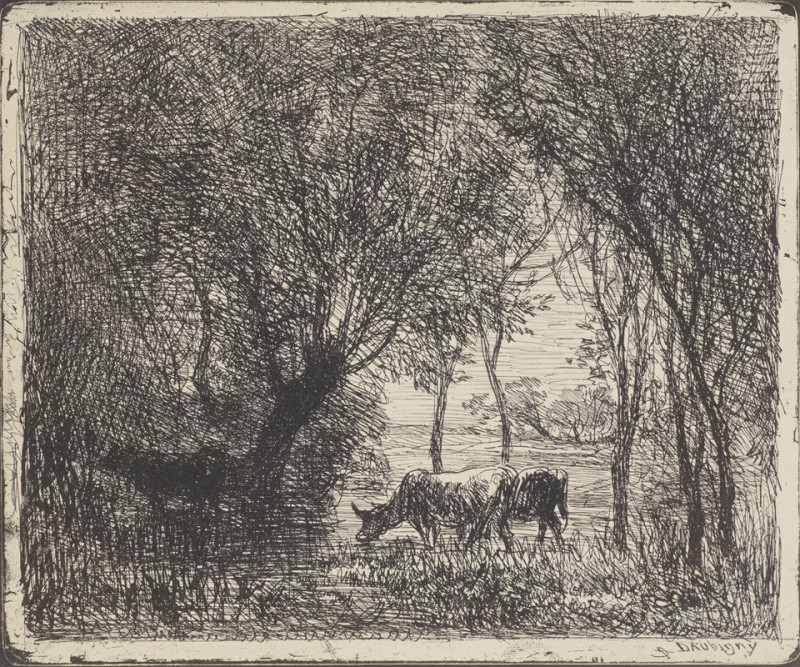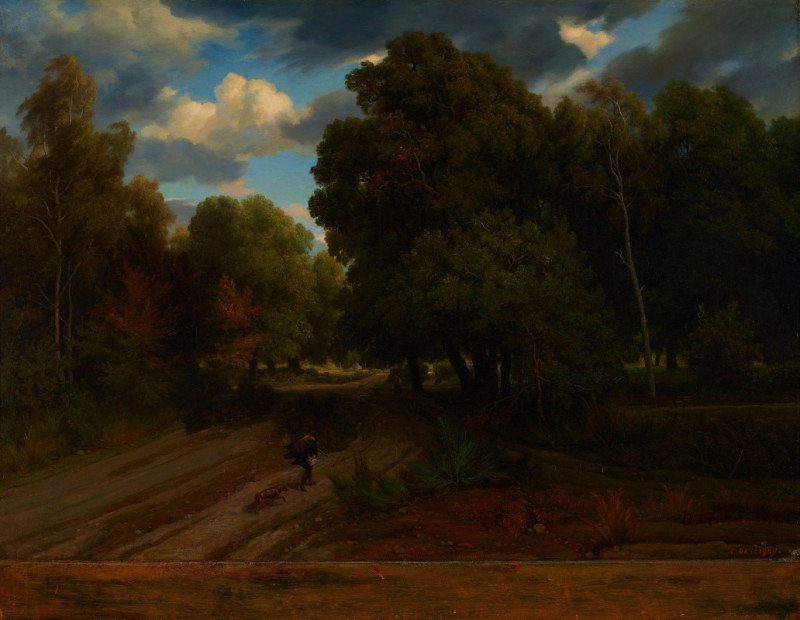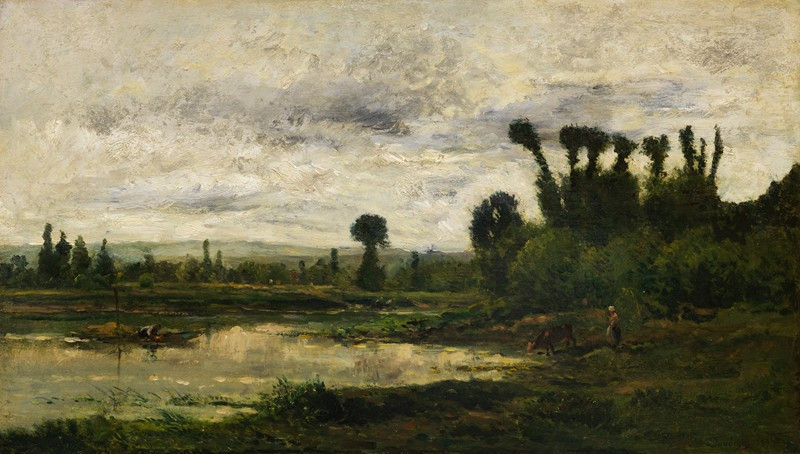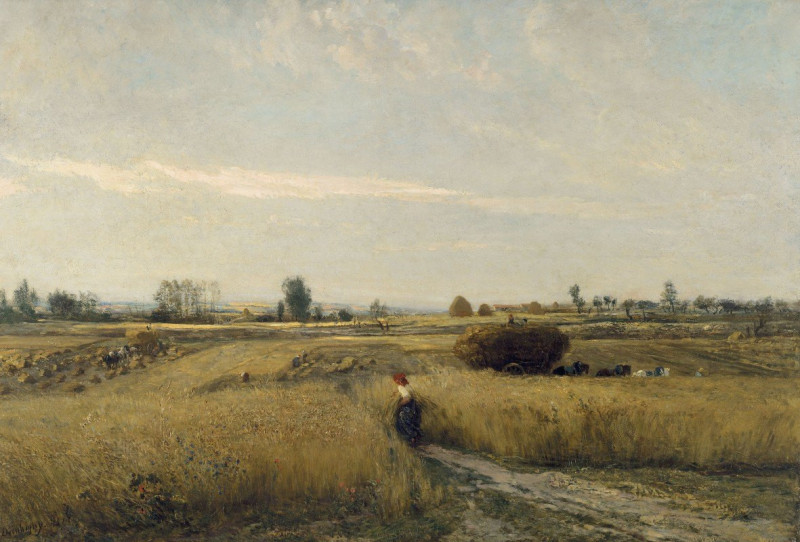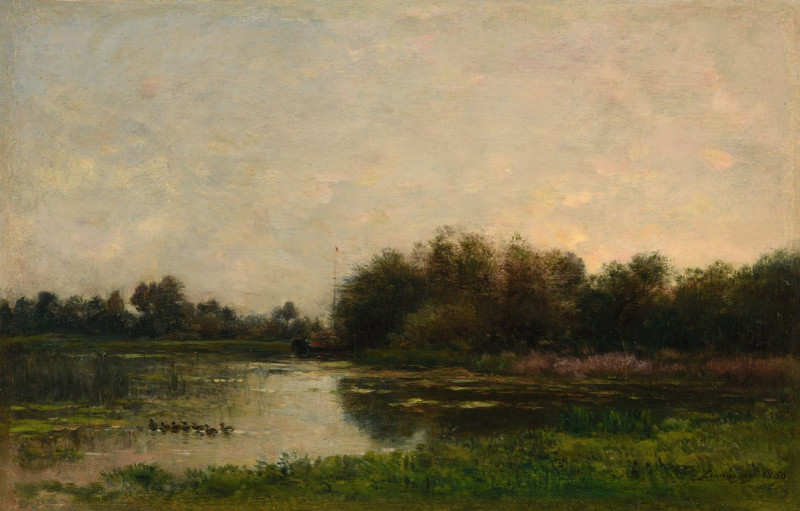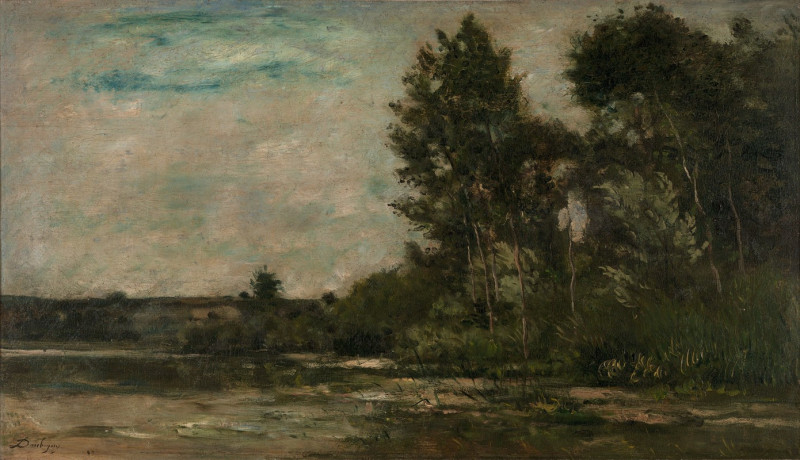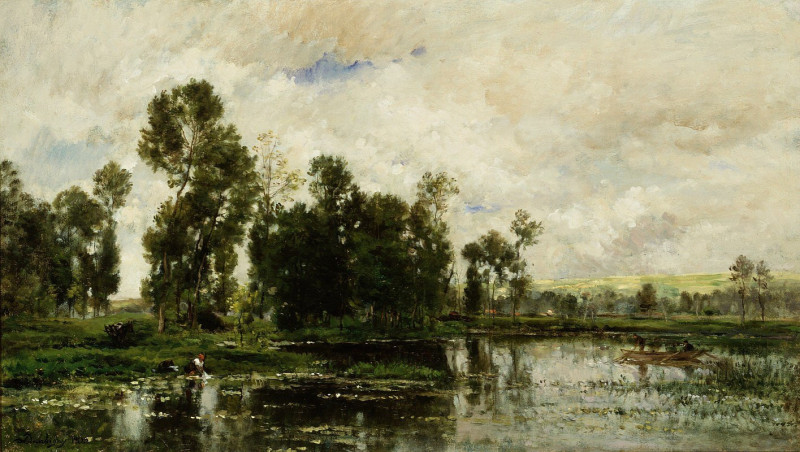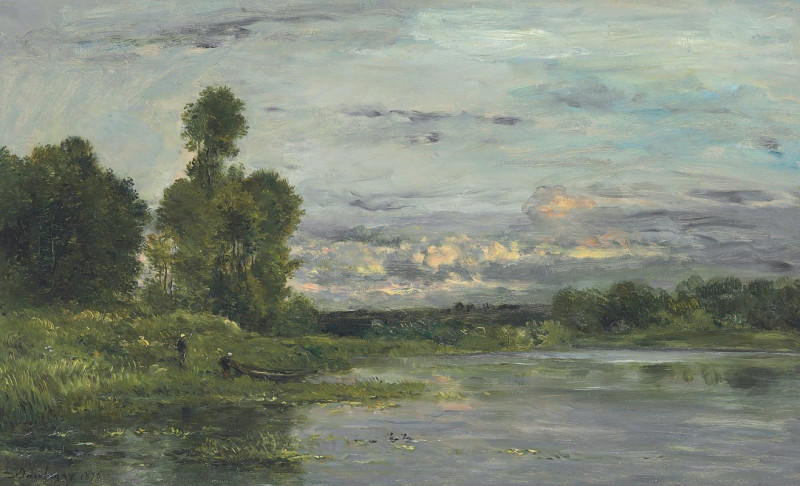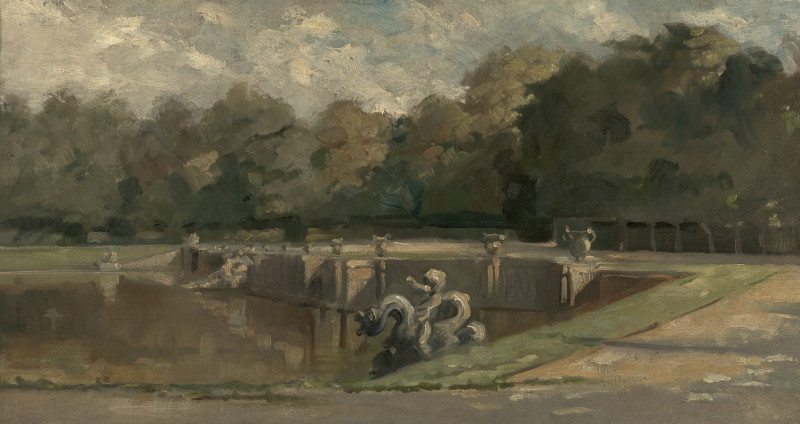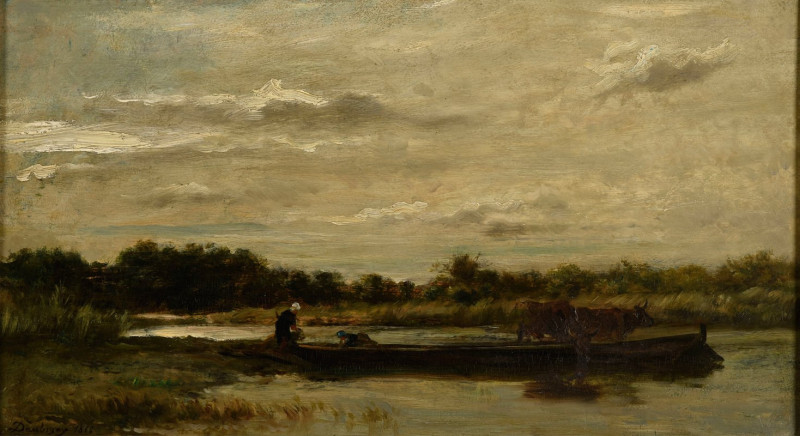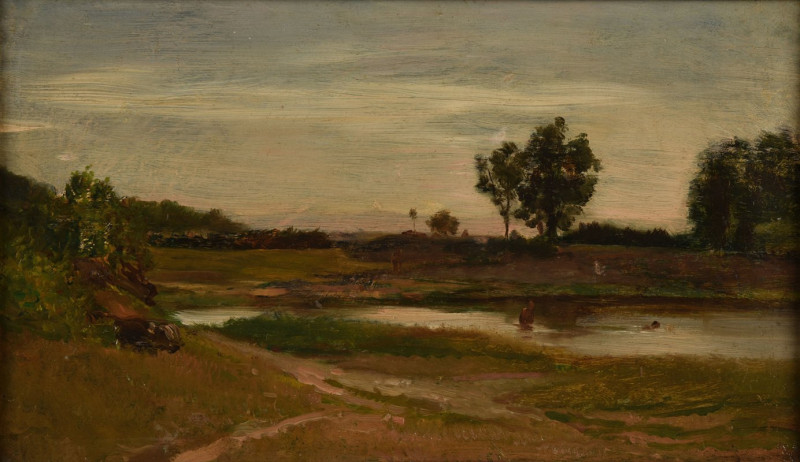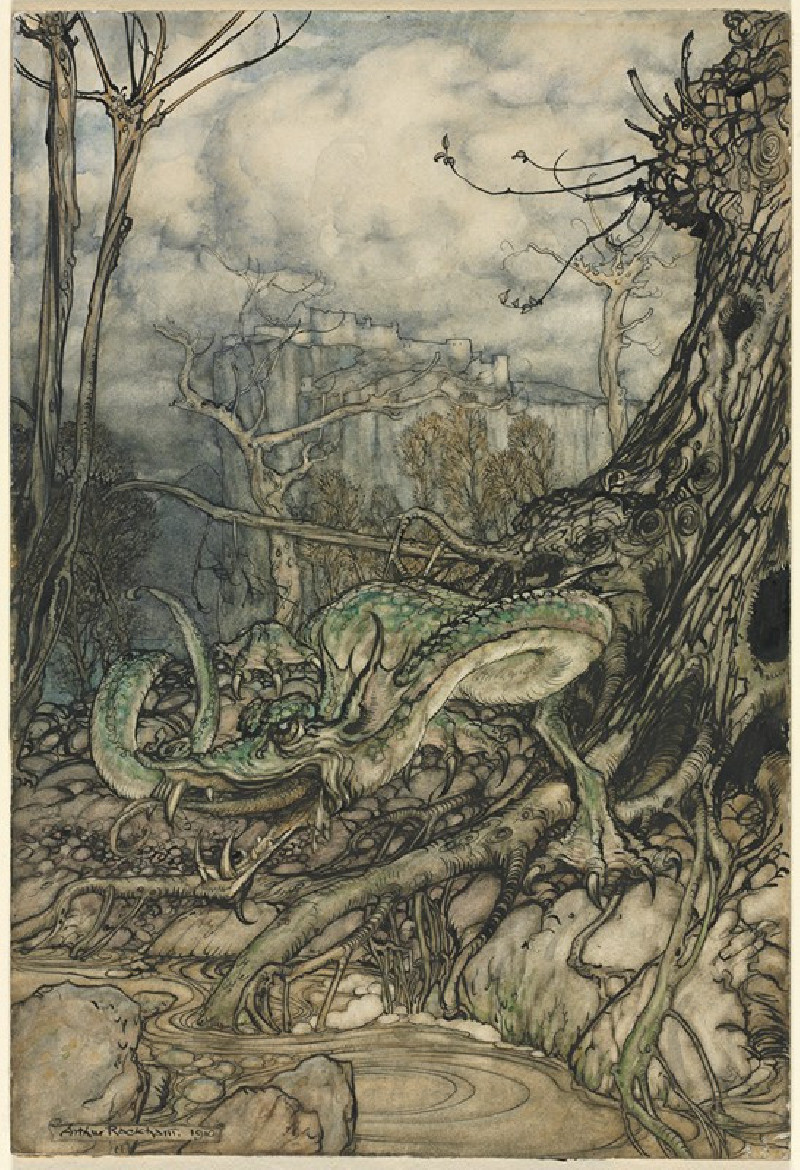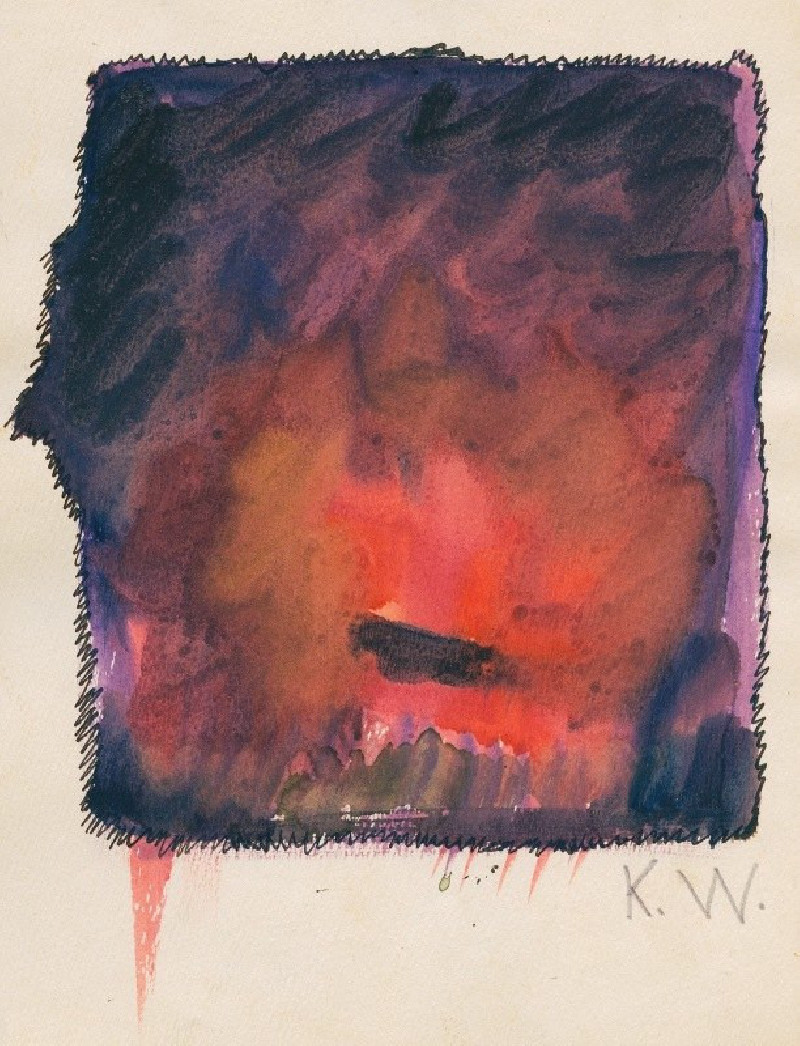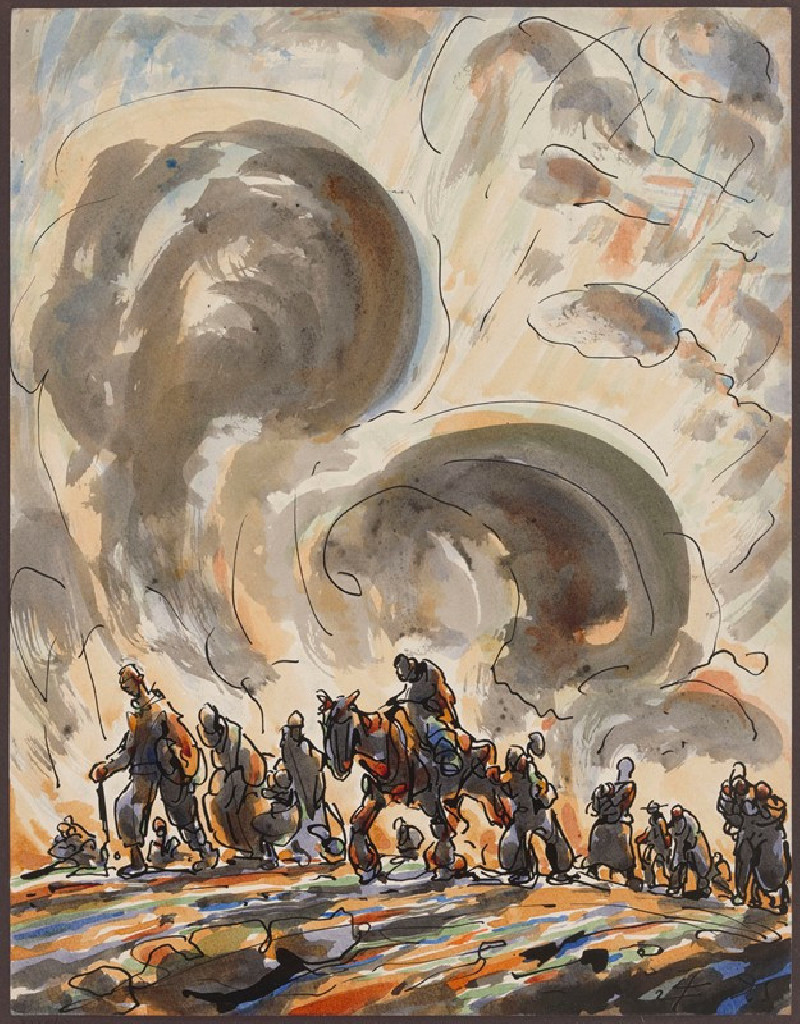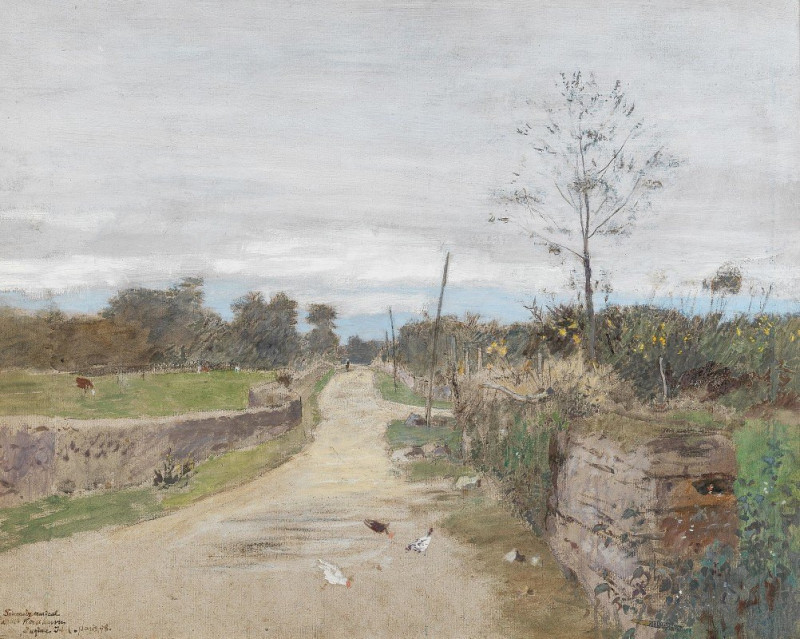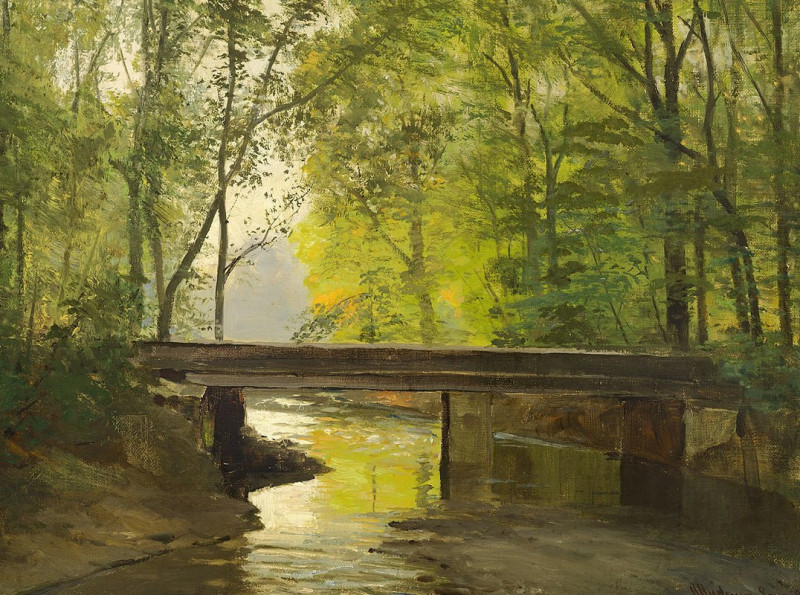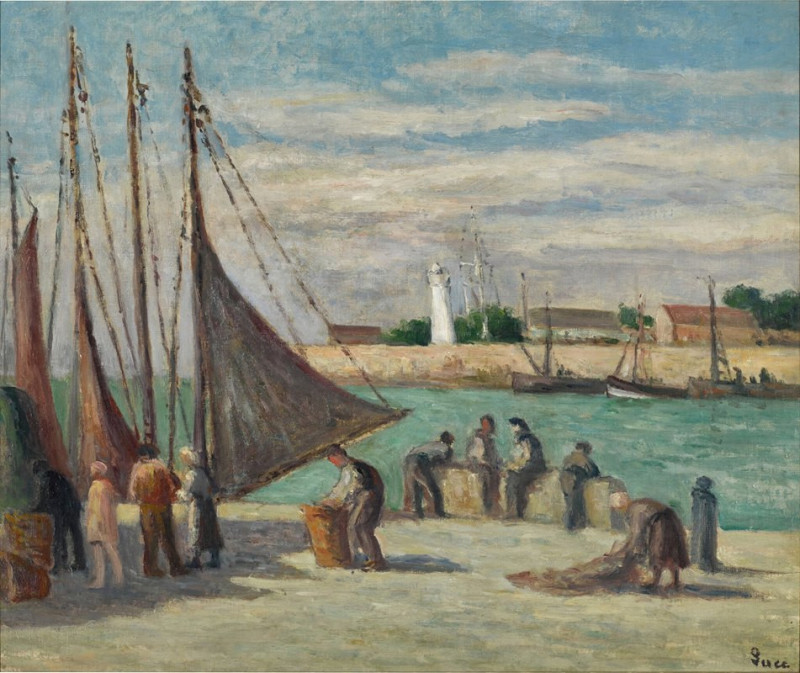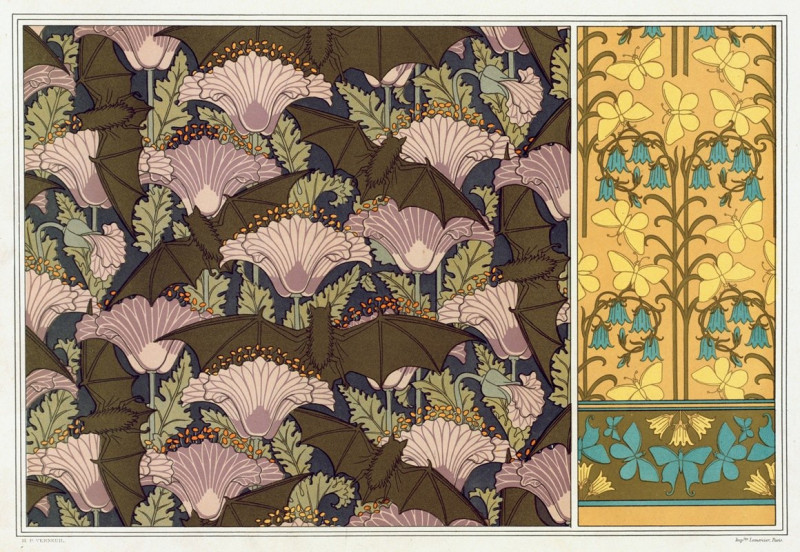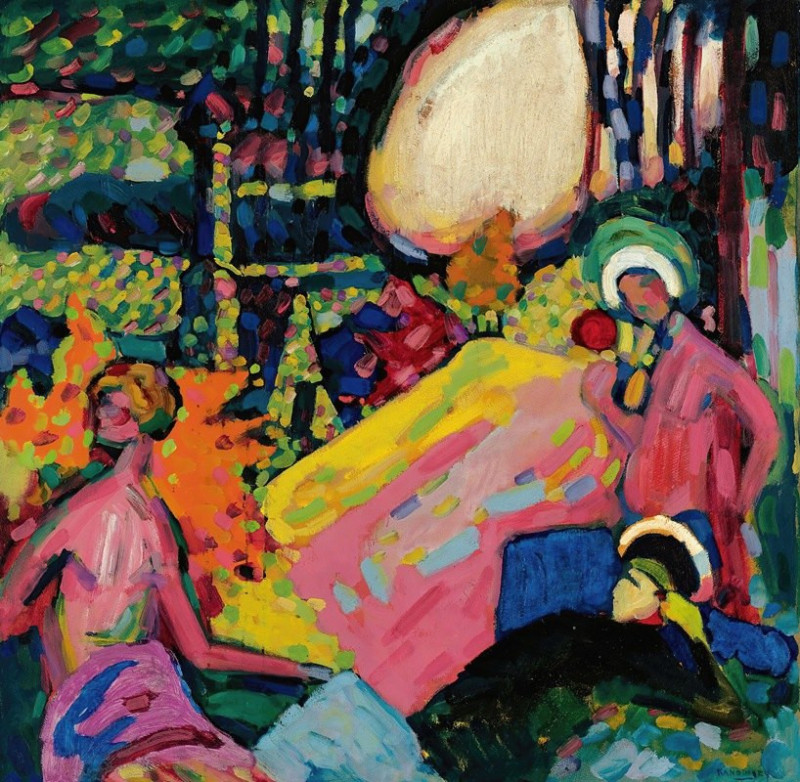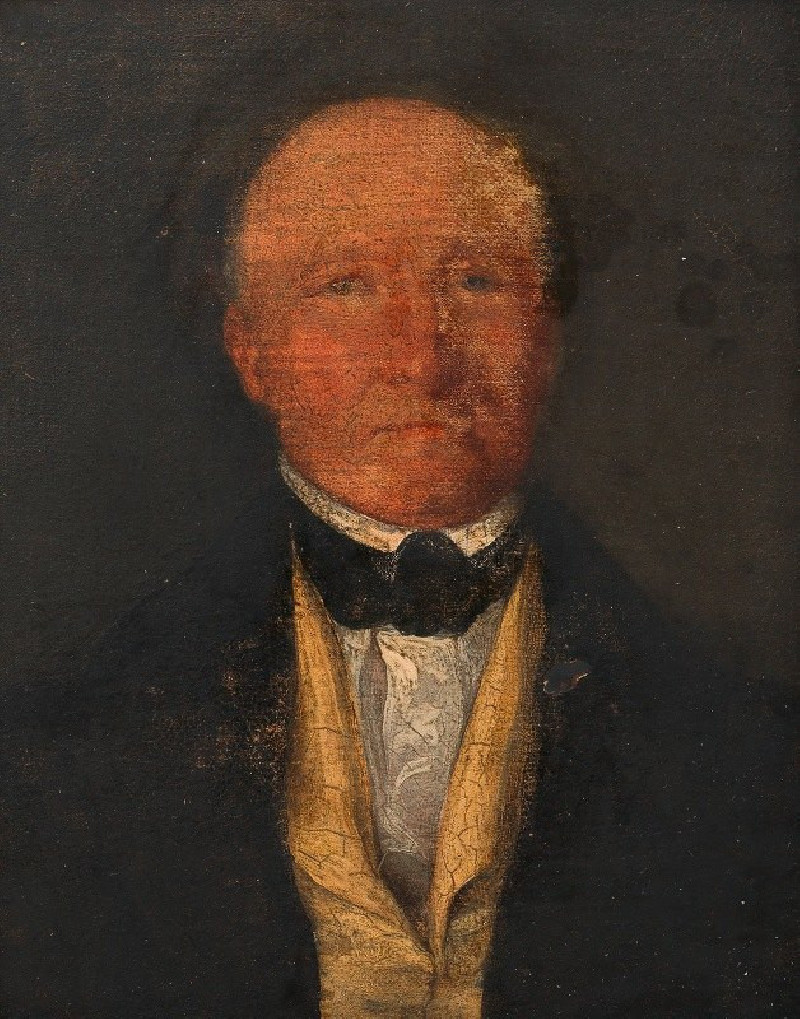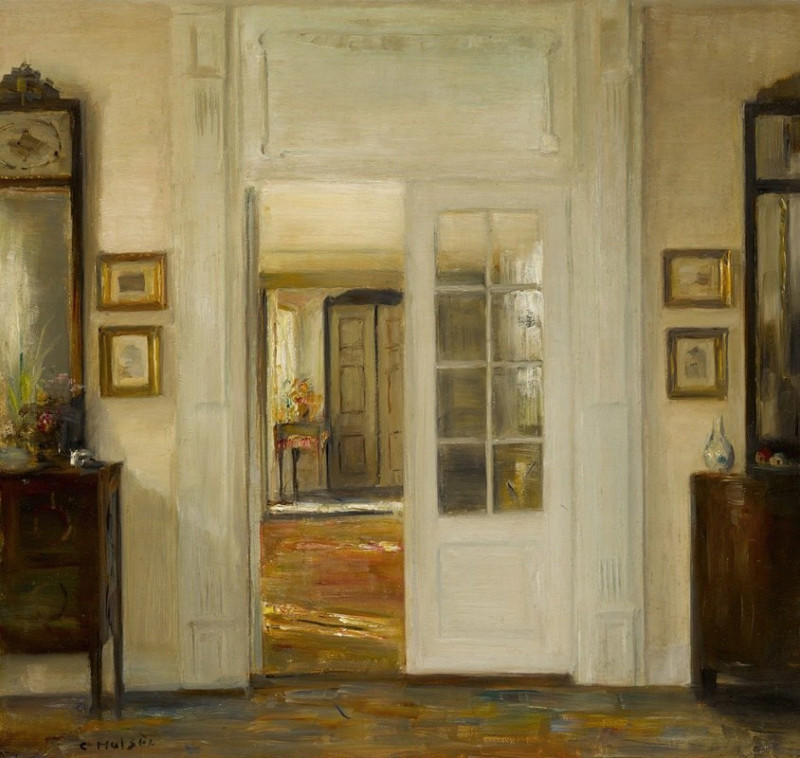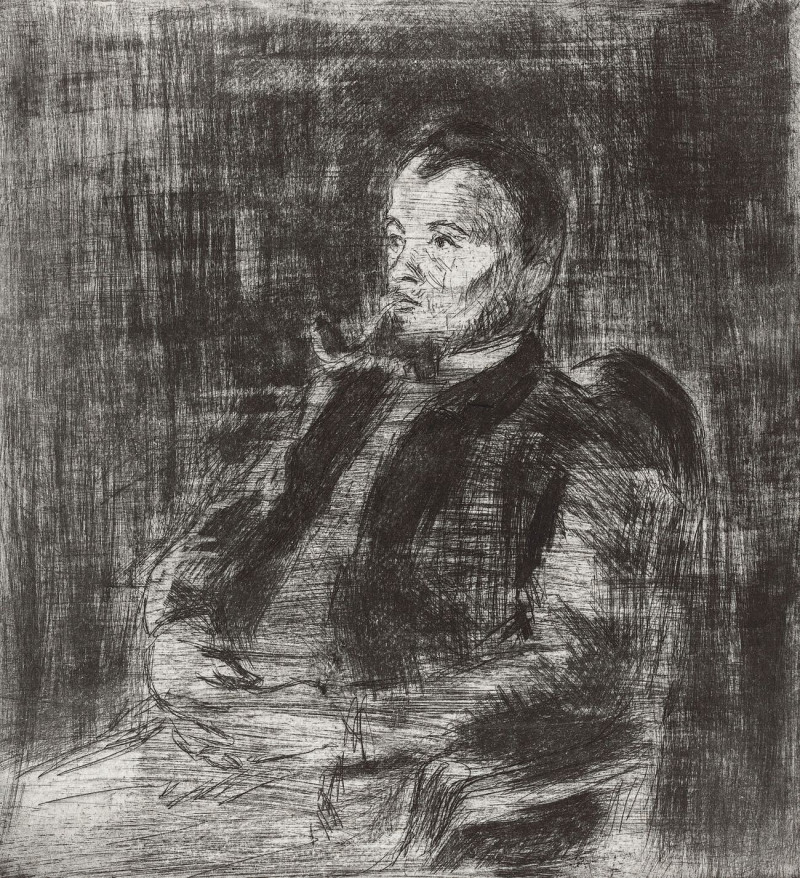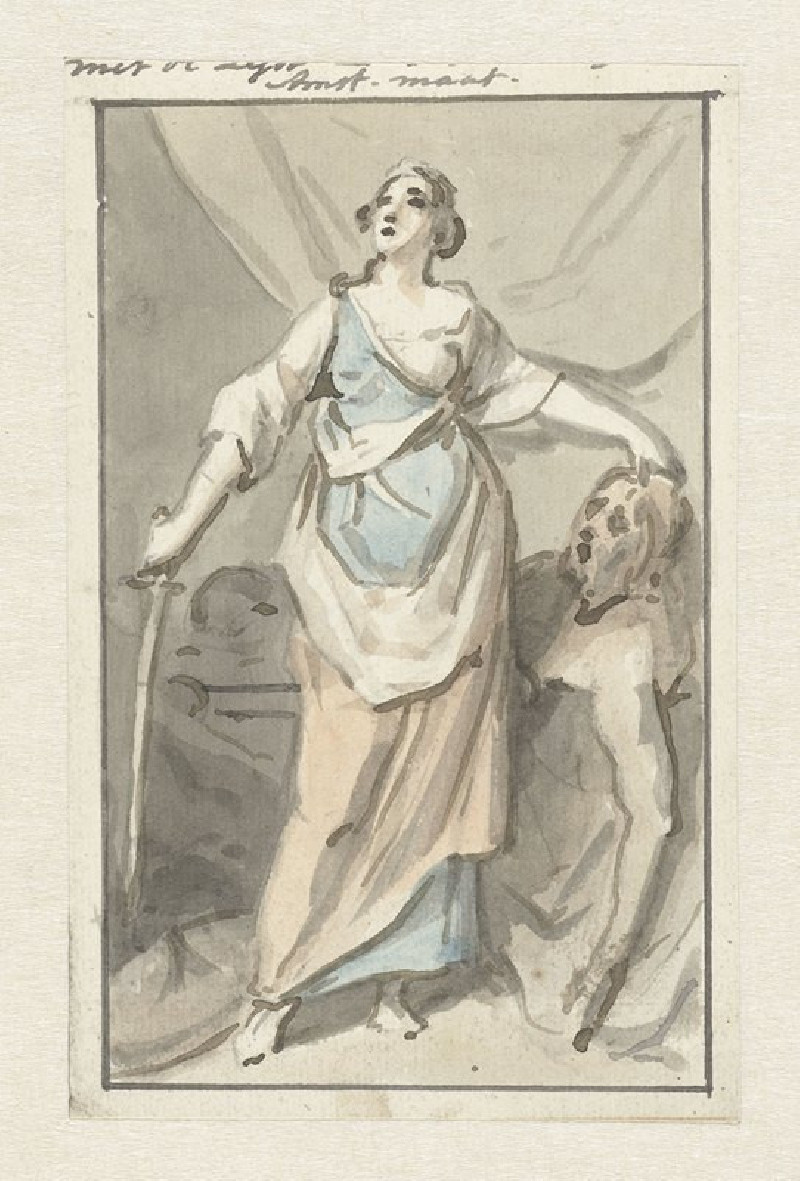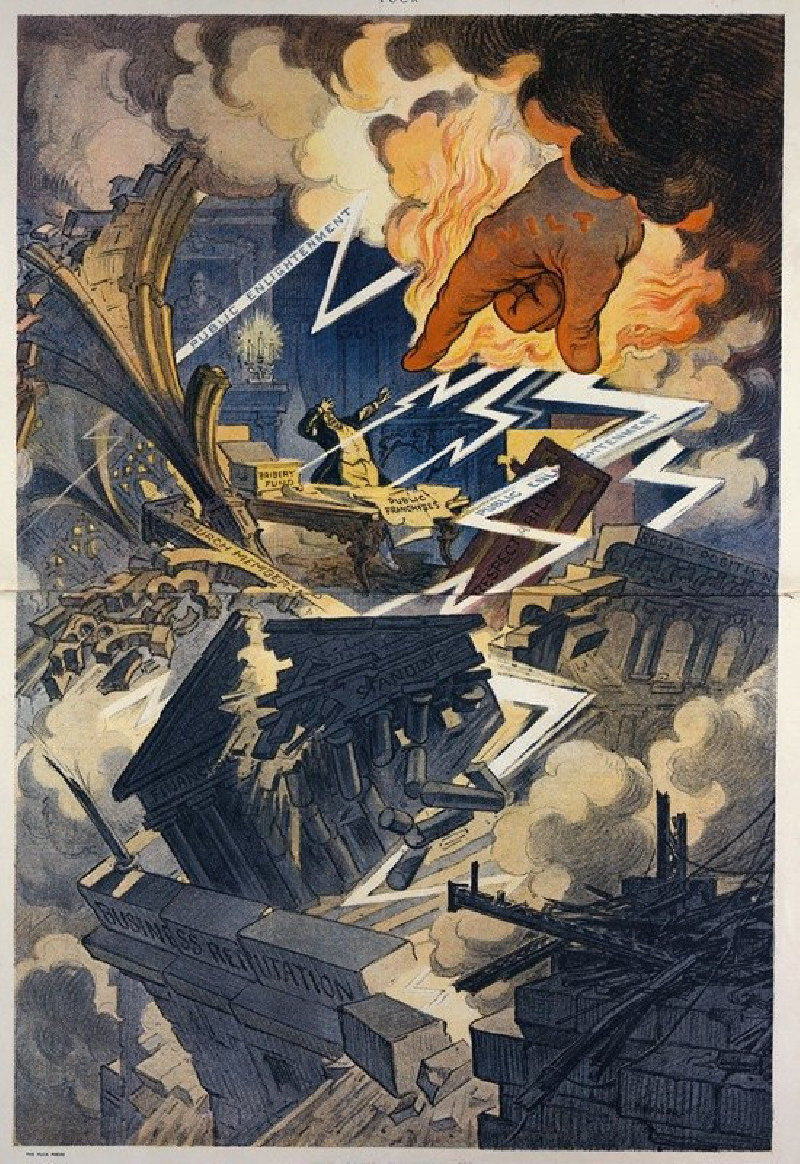Entrée de Kérity (1871)
Technique: Giclée quality print
Recommended by our customers
More about this artwork
Entrée de Kérity (1871) is an evocative painting by Charles François Daubigny, a prominent figure in the Barbizon school known for its naturalistic depiction of rural settings. In this vivid landscape, Daubigny captures a tranquil yet dramatic scene at the entrance of Kérity, a small village in Brittany, France.The painting is filled with a raw sense of immediacy that pulls the viewer into the coastal environment depicted. The foreground is dominated by rugged, dark rocks that guide one's eyes toward a serene stretch of beach dotted with small figures, possibly villagers going about their daily routines. These figures add a human element to the otherwise untamed natural landscape, providing a sense of scale and liveliness.The central focus of the painting is a cluster of thatched houses, their rustic and weathered walls standing resilient against the elements. These homes emit a feeling of warmth and safety, contrasting sharply with the expansive and moody sky overhead. The dynamic brushstrokes in the sky suggest a windy day, with clouds swirling in a mix of grays, blues, and whites that evoke the unpredictable coastal weather.Off to the right side, a dynamic body of water extends to the horizon, hinting at the vastness of the ocean adjacent to Kérity. This element adds a sense of depth and infinity to the scene, reminding viewers of the enduring connection between land and sea.Daubigny's skillful handling of natural light and shadow plays across the canvas, creating a lively interplay that accentuates the textural details of the landscape. His use of thick, expressive brushstrokes adds a tactile quality to the work, making the elements of nature almost tangible.
Delivery
Returns
Charles-François Daubigny (15 February 1817 – 19 February 1878) was a French painter, one of the members of the Barbizon school, and is considered an important precursor of impressionism.
He was also a prolific printmaker, mostly in etching but also as one of the main artists to use the cliché verre technique.

